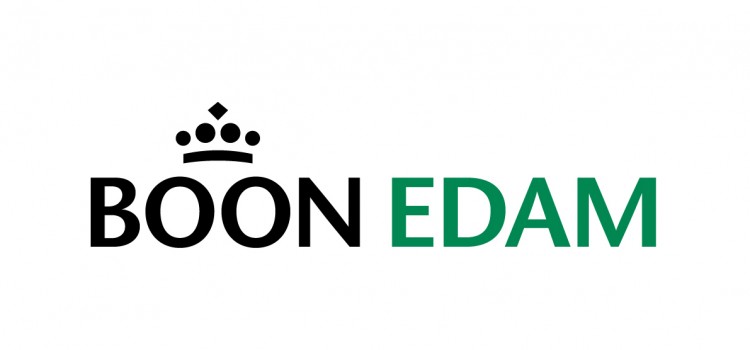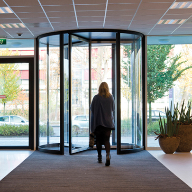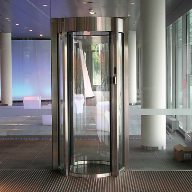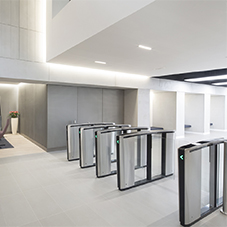Geoff Firth, Specification Manager at Boon Edam Ltd, discusses how increased security requirements for commercial buildings has impacted the development of access control systems over the past decade; leading to the emerging trend of integrated, intelligent buildings.
“Historically, access control security systems would predominantly be found in banks or government buildings, however over the last decade this has changed dramatically. It’s very rare to now walk into a building that does not have any form of security system installed.
There are different drivers for this change, such as the ability to control and monitor personnel entering and exiting the building for fire regulations, to protect valuable equipment or data held inside; along with the increasing demand to protect a building against potential terrorist threats.
I’ve found that a developing trend for pedestrian access control systems, is the evolution of the ‘intelligent building solution’. This has stemmed from the ability to integrate the physical barrier with many other systems, such as card readers, lift call and CCTV systems.
Most corporate buildings now have at a minimum, soft security measures in place. An individual’s access activity can be constantly monitored and recorded, with systems able to block unauthorised access attempts. This enables an audit of personnel within the building to be conducted, safeguarding against security and fire threats.
Access control systems are not solely used for security purposes. The information they provide can help a company to establish its own access trends, such as peak times and they can also track employees’ time spent within the building and specific areas of the building for attendance purposes.
For many corporations, it is crucial that employees or visitors only have access to certain departments within the building; soft security measures can provide the assurance that unauthorised access will be denied, and access granted solely to approved individual’s identity devices. Proximity cards are making access and security more seamless than ever, providing the solution to the heightened demand for personnel access control in corporate buildings. Card systems that integrate security, privacy and convenience allow the organisation to achieve a new level of security assurance.
There has been a growing trend in the demand for high-security access control systems within the last decade. Previously, it was not uncommon for people to be able to freely walk into buildings and gain instant access to the reception or lift lobby area, often with no restrictions placed on the floors that visitors could access. More and more clients are seeing the value in installing hard security access systems to protect employees and visitors against potential threats.
One of the main reasons behind the development of access control systems in commercial buildings has been the gradual move away from the typical 9-5 working hour day. The ability to work anytime, anywhere, has led to a move from manned entrances, to fully automated, secure entry systems to allow freedom to work unrestricted hours.
Throughout the past eight years, the development of biometric security has been significant. When we talk about biometric security, we are no longer just referring to a standard thumbprint reader, this has now evolved to incorporating retinal scans and facial recognition within access systems. This additional layer of security is becoming a popular trend for businesses such as data centres, where the risk of a lost or stolen card presents a threat for unauthorised access into areas such as server rooms.
High-security revolving doors can benefit from added security features, such as ceiling sensors to prevent tailgating, contact mats to detect the presence of a user or a weight system to assess the load imposed by the user. The revolving door can also be secured, so that rotation only begins following a signal from an integrated access control system.
A relatively recent trend we are seeing supports this move towards an automated intelligent building. The integration of the access control system with other systems, such as Lift Display Units (LDUs), allows for a smooth throughput transition.
LDUs assist in buildings where user access is controlled and monitored; a lift display is incorporated into the top of a security lane to direct the user to the appropriate lift for their required floor.”
Access and security control systems are becoming increasingly intelligent and integrated; as standards change and technology develops, future trends will continue to emerge.
View Security Speed Gates, Turnstiles & Security Gates Product Entry





